Liquid-liquid phase separation promotes animal desiccation tolerance
- PMID: 33077592
- PMCID: PMC7959570
- DOI: 10.1073/pnas.2014463117
Liquid-liquid phase separation promotes animal desiccation tolerance
Abstract
Proteinaceous liquid-liquid phase separation (LLPS) occurs when a polypeptide coalesces into a dense phase to form a liquid droplet (i.e., condensate) in aqueous solution. In vivo, functional protein-based condensates are often referred to as membraneless organelles (MLOs), which have roles in cellular processes ranging from stress responses to regulation of gene expression. Late embryogenesis abundant (LEA) proteins containing seed maturation protein domains (SMP; PF04927) have been linked to storage tolerance of orthodox seeds. The mechanism by which anhydrobiotic longevity is improved is unknown. Interestingly, the brine shrimp Artemia franciscana is the only animal known to express such a protein (AfrLEA6) in its anhydrobiotic embryos. Ectopic expression of AfrLEA6 (AWM11684) in insect cells improves their desiccation tolerance and a fraction of the protein is sequestered into MLOs, while aqueous AfrLEA6 raises the viscosity of the cytoplasm. LLPS of AfrLEA6 is driven by the SMP domain, while the size of formed MLOs is regulated by a domain predicted to engage in protein binding. AfrLEA6 condensates formed in vitro selectively incorporate target proteins based on their surface charge, while cytoplasmic MLOs formed in AfrLEA6-transfected insect cells behave like stress granules. We suggest that AfrLEA6 promotes desiccation tolerance by engaging in two distinct molecular mechanisms: by raising cytoplasmic viscosity at even modest levels of water loss to promote cell integrity during drying and by forming condensates that may act as protective compartments for desiccation-sensitive proteins. Identifying and understanding the molecular mechanisms that govern anhydrobiosis will lead to significant advancements in preserving biological samples.
Keywords: cryptobiosis; late embryogenesis abundant; liquid-liquid phase separation; membraneless organelle; water stress.
Conflict of interest statement
The authors declare no competing interest.
Figures


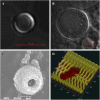
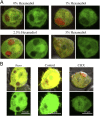
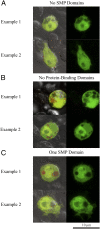
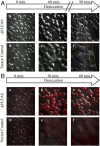
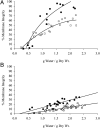

Similar articles
-
Structural properties and cellular expression of AfrLEA6, a group 6 late embryogenesis abundant protein from embryos of Artemia franciscana.Cell Stress Chaperones. 2019 Sep;24(5):979-990. doi: 10.1007/s12192-019-01025-8. Epub 2019 Jul 30. Cell Stress Chaperones. 2019. PMID: 31363993 Free PMC article.
-
Functional and Conformational Plasticity of an Animal Group 1 LEA Protein.Biomolecules. 2022 Mar 10;12(3):425. doi: 10.3390/biom12030425. Biomolecules. 2022. PMID: 35327618 Free PMC article.
-
A novel group 6 LEA protein from diapause embryos of Artemia franciscana is cytoplasmically localized.Tissue Cell. 2020 Dec;67:101410. doi: 10.1016/j.tice.2020.101410. Epub 2020 Jul 13. Tissue Cell. 2020. PMID: 32835943
-
Stress tolerance during diapause and quiescence of the brine shrimp, Artemia.Cell Stress Chaperones. 2016 Jan;21(1):9-18. doi: 10.1007/s12192-015-0635-7. Epub 2015 Sep 3. Cell Stress Chaperones. 2016. PMID: 26334984 Free PMC article. Review.
-
Molecular approaches for improving desiccation tolerance: insights from the brine shrimp Artemia franciscana.Planta. 2015 Aug;242(2):379-88. doi: 10.1007/s00425-015-2281-9. Epub 2015 Mar 26. Planta. 2015. PMID: 25809151 Free PMC article. Review.
Cited by
-
Long-term preservation of germ cells and gonadal tissues at ambient temperatures.Reprod Fertil. 2022 Mar 21;3(2):R42-R50. doi: 10.1530/RAF-22-0008. eCollection 2022 Apr 1. Reprod Fertil. 2022. PMID: 35514540 Free PMC article. Review.
-
In vivo expression vector derived from anhydrobiotic tardigrade genome enables live imaging in Eutardigrada.Proc Natl Acad Sci U S A. 2023 Jan 31;120(5):e2216739120. doi: 10.1073/pnas.2216739120. Epub 2023 Jan 24. Proc Natl Acad Sci U S A. 2023. PMID: 36693101 Free PMC article.
-
Desiccation-induced fibrous condensation of CAHS protein from an anhydrobiotic tardigrade.Sci Rep. 2021 Nov 4;11(1):21328. doi: 10.1038/s41598-021-00724-6. Sci Rep. 2021. PMID: 34737320 Free PMC article.
-
Liquid-Liquid Phase Separation and Protective Protein Aggregates in Bacteria.Molecules. 2023 Sep 12;28(18):6582. doi: 10.3390/molecules28186582. Molecules. 2023. PMID: 37764358 Free PMC article. Review.
-
The tardigrade protein CAHS D interacts with, but does not retain, water in hydrated and desiccated systems.Sci Rep. 2023 Jun 27;13(1):10449. doi: 10.1038/s41598-023-37485-3. Sci Rep. 2023. PMID: 37369754 Free PMC article.
References
-
- Benner S. A., Ricardo A., Carrigan M. A., Is there a common chemical model for life in the universe? Curr. Opin. Chem. Biol. 8, 672–689 (2004). - PubMed
-
- Yancey P. H., Organic osmolytes as compatible, metabolic and counteracting cytoprotectants in high osmolarity and other stresses. J. Exp. Biol. 208, 2819–2830 (2005). - PubMed
Publication types
MeSH terms
Substances
LinkOut - more resources
Full Text Sources
Medical
Research Materials

